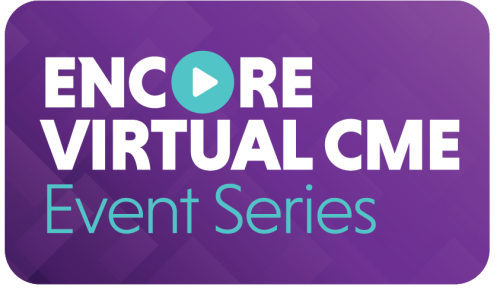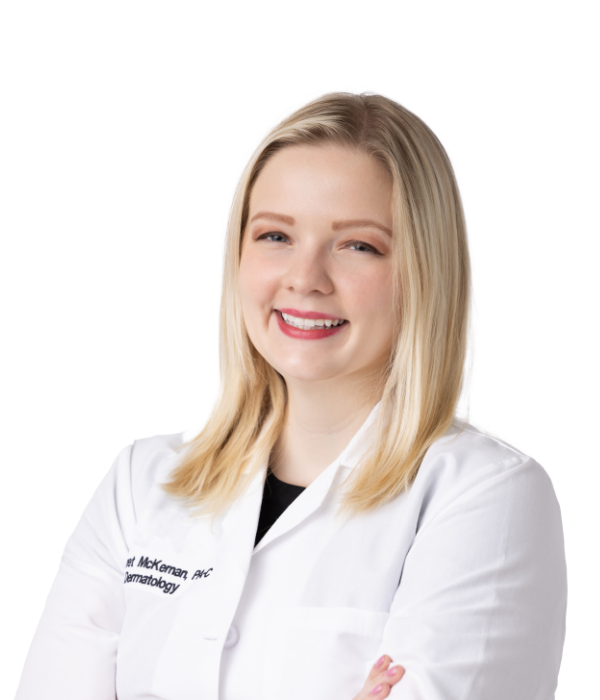Encore
Encore CME –
Myrtle Beach 2025
Starting at $907

Introducing the Encore Virtual CME Event Series
Myrtle Beach Encore Virtual CME includes discussions on hypertension, identifying benign and malignant skin lesions, advancing diabetes management with technology, orthopaedic physical exam techniques, opioid selection, rotation, tapering, and review, as well as contraceptive options and approaches. Release date: December 1, 2025
Course Overview:

CME Courses by Viet Le, DMSc, PA-C, FACC, FAHA, HF-Cert
“Arrhythmia’s Gonna Get You” – Atrial Fibrillation (Rx=0.25)
We will review the most common arrhythmia, Atrial Fibrillation. Diagnosis and the acute/chronic management through lifestyle and implications of pharmacologic treatment will also be discussed.
“Under Pressure” – Hypertension (Rx=0.25)
We will review updated guidelines and the importance of early diagnosis and intensive treatment of Hypertension. Diagnosis and chronic management through lifestyle and pharmacologic treatment will also be discussed.
“Head Above Water” – Heart Failure (Rx=0.25)
We will review the updated Heart Failure guidelines by reviewing chronic management through lifestyle and the importance of pharmacologic treatment.
“Heart Attack” – Coronary Artery Disease (Rx=0.50)
We will review the continuum of coronary artery disease from acute coronary syndrome to chronic management. Chronic management through lifestyle and the importance of pharmacologic treatment will also be discussed.
“I Can’t Walk 500 Miles” – Peripheral Artery Disease
We will review peripheral arterial disease and the importance of screening and early intensive management to reduce the risk of amputations and other cardiovascular disease events through lifestyle and pharmacologic treatment.

CME Courses by Margaret McKernan, DMSc, PA-C
The Song and Dance of Dermatology (Rx=0.25)
Dive into the world of dermatology. We will explore the “song” of dermatology, including how to describe lesions and rashes. We will learn the “dance” of dermatology by showing you how to perform a full-body skin exam. Additional review topics will include completing a shave and punch biopsy and when to perform each. Lastly, learn how to “dance” with your partner, the dermatology provider. What can you do to set your patient up for success while they wait to get in with the dermatology specialist?
The Good, The Bad, The Ugly: Identifying Benign and Malignant Skin Lesions (Rx=0.25)
Skin cancer is on the rise. 1 in 5 Americans will develop skin cancer over their lifetime. It is important to know what signs and symptoms to look for in different types of skin cancer and to be familiar with common benign neoplasms. This lecture is very visual and will include numerous photos to help attendees recognize these lesions. We will also utilize what we learned from the previous lecture by describing lesions as we go along.
Son of an Itch! What’s So Itchy? (Rx=0.50)
One of the most common and complex complaints in dermatology is itch. Learn how to approach itch in your clinic and common causes of itch. We will discuss both common and uncommon causes of itch, including atopic dermatitis, bullous pemphigoid, urticaria, id reaction, stasis dermatitis, prurigo nodularis, lichen planus, dermatitis herpetiformis, transient acantholytic dermatosis, psoriasis, and more.
Make Your Skin Crawl: Common Skin and Soft Tissue Infections and Infestations (Rx=0.50)
We will explore various bacterial, fungal, viral, and parasitic infections and infestations. We will discuss the diagnosis and treatment of abscesses, tinea (capitis, corporis, pedis, cruris, unguium), molluscum contagiosum, condyloma acuminata (HPV), cellulitis, herpes simplex virus, herpes zoster virus, pediculosis (capitis, corporis, cruris), syphilis, scabies, verruca, and others. We’ll get your skin crawling!
Love the Skin You’re In (Rx=1.00)
One of the most common questions in dermatology is “how should I take care of my skin?” This lecture will review anti-aging tips, including addressing wrinkles, dark spots, and facial rashes. We will cover topical treatments, neurotoxins, microneedling, chemical peels, and fillers. Common facial rashes we will discuss include rosacea, acne, atopic dermatitis, seborrheic dermatitis, and tinea facei. By the end, you will feel confident you can keep your patient feeling confident in their skin!

CME Courses by Amy Butts, PA-C, DFAAPA, BC-ADM, CDCES
It Is More Than Just “High Sugar”: Comprehensive Medical Evaluation and Assessment of Comorbidities
People with diabetes should receive comprehensive care with an interprofessional team. This program will discuss taking a person-centered approach to care that involves a relationship between provider and person with diabetes in treatment management. It will review the comprehensive medical evaluation and assessment of comorbidities for the individualized person.
Positivity and Prevention: Positive Health Behaviors and Well-Being for the Person Living With Diabetes, Prediabetes, and Obesity
Positive health behaviors and psychological well-being are the foundation to improved outcomes for diabetes, prediabetes, and obesity. This program will discuss self-management education including nutrition, physical activity, and psychosocial care. Obesity is a chronic and relapsing disease that increases the risk of type 2 diabetes. Weight management and prevention will be discussed including pharmacologic and surgical interventions.
It Is Time for Medication: How to Choose the Diabetes Medication in a Person-Centered Approach (Rx=1.00)
There are so many options for medication management with type 2 diabetes. It is imperative to take a person-centered approach when selecting medication. This program with discuss non-insulin medication and initiating and intensifying insulin therapy to meet the needs of the person living with diabetes.
Beyond Glycemic Management: Assessing and Managing Comorbidities and Complications (Rx=0.50)
ASCVD is the leading cause of morbidity and mortality for individuals with diabetes. Chronic kidney disease occurs in 20 to 40% of people with diabetes. Complications of diabetes such as retinopathy and neuropathy have profound effects on quality of life. This program will focus on assessing and managing these comorbidities and complications that occur in the people living with diabetes.
Technology and Diabetes: Advancing Diabetes Management With Technology (Rx=0.25)
Technology has changed our world including how we manage people living with diabetes. Multiple technology advancements for diabetes will be discussed including CGM and insulin delivery devices. A discussion on downloading and interpreting AGP reports will help the provider to implement shared decision making into their practice.

CME Courses by Travis Randolph, PA-C
Introductions to the Basics of Musculoskeletal Imaging: What Am I Even Looking At?
What better way to start a day in Orthopaedics than a deep dive into Musculoskeletal imaging. Do you find yourself worried about ordering the correct images or the right test? Do you have trouble interpreting the x-ray/ MRI/ CT images that you ordered? Don’t rely completely on the radiologist’s interpretation. This presentation will examine the basics of Musculoskeletal Imaging. We’ll discuss indications for ordering appropriate images, when to order x-ray vs CT vs MRI, and how to interpret those images for associated fractures or sprains. The majority of Orthopaedic related injuries require some form of diagnostic imaging. Join me for this session on Musculoskeletal imaging to increase your confidence with interpreting radiology studies and finally find out just what you are looking at.
Fracture Description and Management using X-ray Vision: Is it Broken or Fractured? (Rx=0.25)
Ever wish you had x-ray vision to see the 206 bones that make up the skeletal system? Let’s take a look below the surface of the skin to answer every patient’s burning question: Is it broken or fractured? Hopefully, you already know how to answer that question. This presentation will review some common x-ray findings and breakdown methods to describe fractures. When making a patient referral to Orthopaedics, the correct fracture description can often help in determining whether the fracture can be treated with or without surgical intervention. We’ll also discuss the appropriate management of commonly seen fractures such as those involving the foot, ankle, shoulder, wrist, and hand. This presentation will cover different medical conditions that may delay bone healing in fractures, differences between acute fractures and stress related injuries, and the nuances of growth plate injuries in pediatric patients. Join me for this session on Orthopaedic fractures, and we’ll develop a treatment plan to get all 206 bones back in alignment.
Orthopaedic Injuries Below the Belt: It’s Going TIBIA OK! (Rx=0.25)
Let’s start with lower extremity injuries. This presentation will start at the foot, work upwards through the ankle, knee and hip, and finish at the lumbar spine. Maybe your patient is an avid runner with knee pain, an elderly patient with hip pain, or someone that took an awkward step at the bottom of the stairs resulting in ankle pain. We’ll cover the most commonly seen injuries involving these lower extremity joints, discuss physical exam findings with corresponding radiology results and review appropriate management strategies. This presentation will provide a breakdown of treatment options including non-operative treatment (i.e. medications, injections, physical therapy) and indications for surgical treatment. Join me for this session on lower extremity injuries, and you can begin to reassure your patients: It’s going TIBIA OK!
Orthopaedic Injuries Above the Waist: They Aren’t All Humerus! (Rx=0.25)
Time to move above the waist and talk about upper extremity injuries. This presentation will start at the hand, work upwards through the wrist, elbow and shoulder, and finish at the cervical spine. Maybe your patient is a carpenter with wrist pain, a pitcher with elbow pain, or someone who fell off a ladder resulting in shoulder pain. We’ll cover the most commonly seen injuries involving these upper extremity joints, discuss physical exam findings with corresponding radiology results and review appropriate management strategies. This presentation will provide a breakdown of treatment options including non-operative treatment (i.e. medications, injections, physical therapy) and indications for surgical treatment. Join me for this session on upper extremity injuries, and you can have your patients back to laughing in no time!
Orthopaedic Physical Exam Techniques: Stop Pulling My Leg and Twisting My Arm!
The hallmark of the musculoskeletal assessment: knowing your anatomical landmarks and using special tests to narrow down your differential diagnosis. It’s nearly impossible to know every special test mentioned in text. During this presentation, I’ll walk you through my Orthopaedic physical examination, and we’ll break down some key physical exam findings that will help you determine when further advanced imaging may be warranted. Is it neck or shoulder pain? Is it back or hip pain? This presentation will provide you with tips and pearls to streamline your musculoskeletal assessment and be confident in your diagnosis. Feel free to leave your stethoscope at home for this session. This hands-on session will allow you to practice any Orthopaedic special test that causes you anxiety. Join me for this Orthopaedic physical exam session, and we’ll look to perfect your musculoskeletal assessment. Don’t make me twist your arm!

CME Courses by Hez Naylor, PHD, FNP-BC, AP-PMN, FAIPM
Let’s Be Blunt: Can Cannabis and Opiods Play Nice in Pain Management? (Rx=0.75)
Let’s explore how medical cannabis and opioids can complement or challenge each other in modern pain care. We’ll examine the pharmacology, efficacy, and practical strategies for integrating these therapies while ensuring patient safety and regulatory compliance.
Acute Pain Management in Ambulatory Settings for Opioid-Naive Adults: Non-Opioid Strategies and Appropriate Opioid Use (Rx=0.75)
General principles and safety considerations for acute pain management of opioid-naïve adults. Discussion of pain care for marginalized populations, and recognition and management of undertreatment and bias.
The Pain Management Playbook: 5 Essential Tips for Primary Care Providers (Rx=0.50)
Learn 5 key strategies to master pain management in primary care. This session offers practical tips for comprehensive pain assessment, safe prescribing, prioritizing non-pharmacologic approaches, setting functional goals, and managing referrals effectively.
All About Opioids: Selection, Rotation, Tapering and Review (Rx=1.50)
Discussion of appropriate patient selection, medication choice and dosing based on pain severity and patient comorbidities; pharmacokinetics, and pharmacodynamics of pure agonist and mixed agonist-antagonist opioids. Discuss opioid rotation, optimizing analgesia, and management of side effects. Discuss risk assessments, opioid tapering, naloxone, and key patient education with case study examples.
Pain and the Power of Suggestion
Hypnosis and suggestion for pain management – what the research says, how to communicate with direct and indirect suggestions, and placebo and nocebo influence in conversations with patients. Learn about response expectancies and practical implementation of suggestions in clinical practice for therapeutic benefit.

CME Courses by Nisha McKenzie, PA-C, CSC, MSCP, IF
Current Contraceptive Options and Approaches (Rx=0.75)
Ready to arm your patients with the options, the data around risks and benefits and help them break down the myths surrounding hormonal contraception? We’ll discuss different types of pills and the hormones in them, and then move on to long acting reversible contraceptives (LARCs) – IUDs and Etonogestrel Implant. We’ll review insertion techniques and pain control options for a trauma informed approach to IUD insertion. We’ll also discuss difficult insertions and removals, as well as who can use LARCs and at what points, including appropriate use of contraceptives in gender diverse folx.
Let’s Talk PCOS and Endometriosis! (Rx=0.25)
PCOS is one of the most common endocrine/metabolic disorders in females. Approximately 10% of reproductive aged females have PCOS, and approximately 10% of reproductive aged females have endometriosis. Yet both of these disorders are widely misunderstood, under-diagnosed, and under-treated. We’ll examine the impact of these disorders on your patients, and dive into the different phenotypes and why both are often a missed diagnosis. Then we’ll move on to options for treatment, including hormonal, non hormonal, and holistic measures for improvement in symptoms.
Low Libido – Yeah, You Can Treat That! (Rx=0.25)
Time for sex ed for grown ups! Let’s examine the role and function of the female sexual response cycle, how it’s different from, but not the defunct version of, male sexuality. And how to appropriately counsel our patients when they ask us how to improve their low libido, or their pain with sex. We’ll discuss options for creating a safe and empowering space for your patients to ask their burning questions and for you to feel confident in your answers! And the best part, we’ll do all of this with science! No more shame in sexuality. This is general medicine and we can create a comfort and confidence in this facet of medicine for you. We’ll review mechanisms of arousal and orgasm, and the pharmacologic and non pharmacologic interventions you can utilize in practice.
Menopause Madness: Breaking It Down! (Rx=1.00)
One hormone at a time. How many patients have asked you to check their hormones, because “something just isn’t right” or “I keep gaining weight”? We’re going to break it all down – hormones, perimenopause, menopause, The Women’s Health Initiative (WHI), the up to date data on hormone risks and benefits so you can answer those seemingly unanswerable questions. The WHI still plagues both prescribers and patients with its longstanding effects on perceptions of hormones, so let’s clarify what the data showed and what that means for your patients.
Say It With Me – “V” Is for Vulva, Vestibule, Vagina (Rx=0.50)
BV accounts for 40-50% of all cases of vaginitis, with yeast following closely behind. Yet little is known or undestood about these infections when they become recurrent. How does our vaginal microbiome play into this? Do probiotics help? What can we as providers do to help our patients who suffer with these recurrences? Leave today with increased understanding of diagnosis and treatment guidelines.
CME Courses by Shelagh Larson DNP, APRN, WHNP-BC, NCMP
The Gyn Visit: Bleeding, Cyst, and Fibroids (Rx=0.25)
In this session, we will start getting those dreaded Gyn visits out of the way. We will go in-depth into why there is heavy or no bleeding and how to test and treat it. Next, we will tackle the cyst issue that haunts every ObGyn. You will be able to understand what and why, and how to treat. Next, the fibroid fiasco will be broken down. You will be able to discuss these concerns like a champ. We will also have time to discuss some vulvar issues.
Contraceptive Update: What’s New, Out and In the Pipeline (Rx=0.50)
Contraceptive choices have widened. In the second session, we will examine not only what’s new for women, but male contraceptives will be introduced. You will understand why you would lick one over another, and I’ll even provide a “cheat sheet” for when you get home.
STI Update: CDC 2021 STI Treatment Guidelines (Rx=0.75)
Just when you memorized the old STD treatments, CDC came along and changed the name and treatment regimen. We will discuss why the name changed from STD to STI, additional STI screenings, and the modifications in treatments. We will also discuss your role in the treatment of sexual partners.
Menopause Matrix: Rising from the Hot Flash Ashes (Rx=0.50)
STIs are not the only treatment modality to get a facelift. The North American Menopause Society (NAMS) updated menopause guidelines in 2022. A point of clarification will happen during this session. You will leave this conference confident about hormone therapy and prescribing to menopausal women.
Not Tonight Honey, I Have a Headache: Sexual Dysfunction (Rx=0.50)
We will end the day with a little sex (discussion). You will appreciate the different sexual response phases and what drugs and conditions that interfere with them. You will have all the right tools to open sexual health discussions and understand “what and why” there may be a problem. Alternatives, medications, and new treatments will be examined.